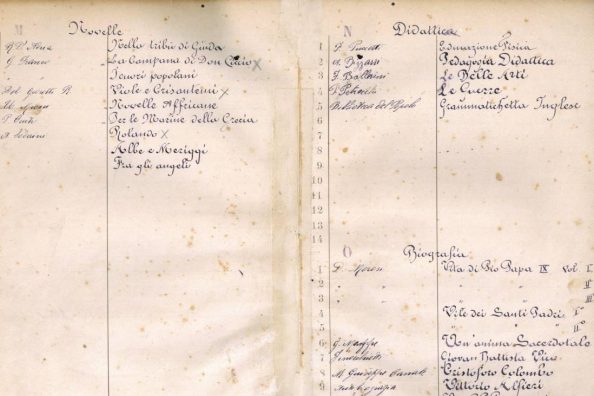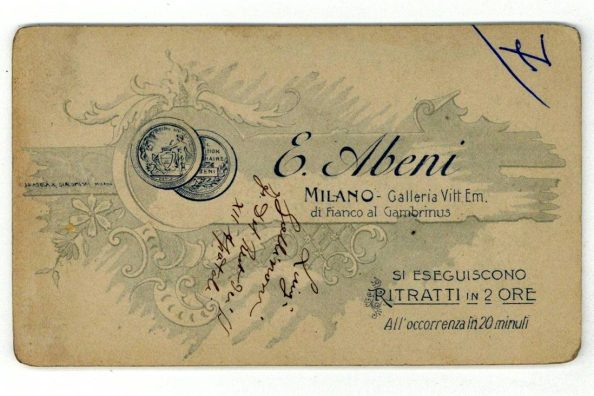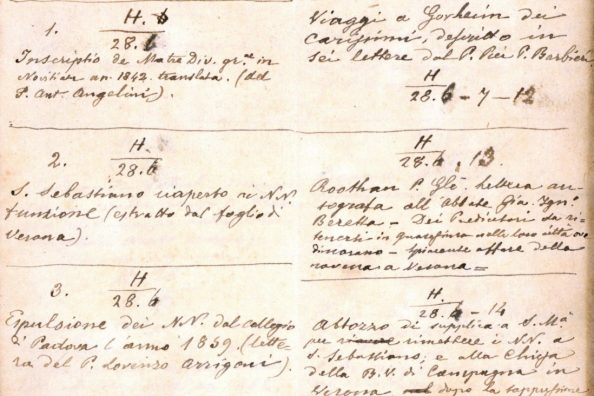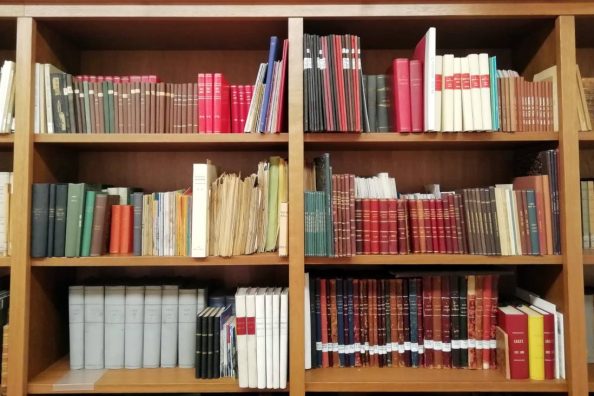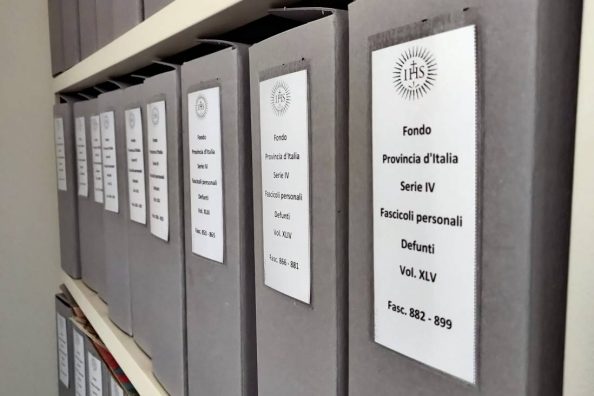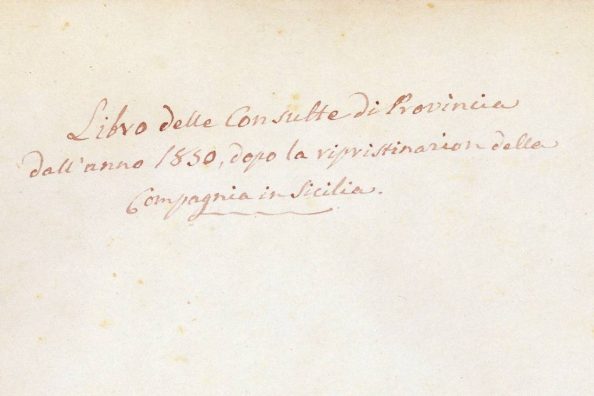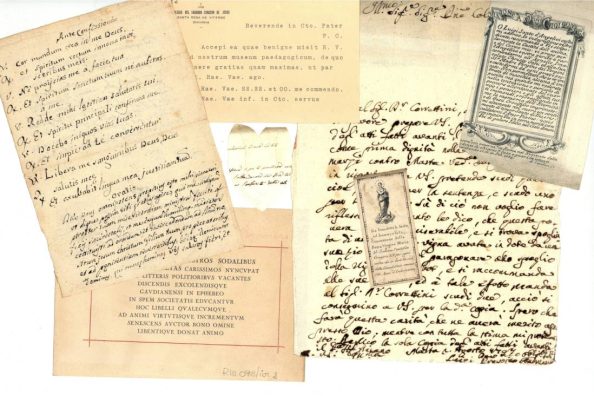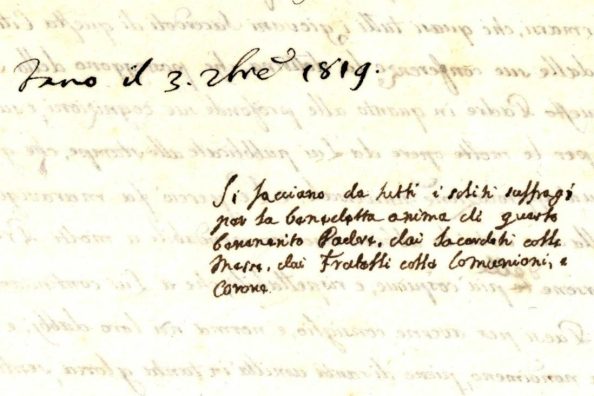The First World War told through archive documents
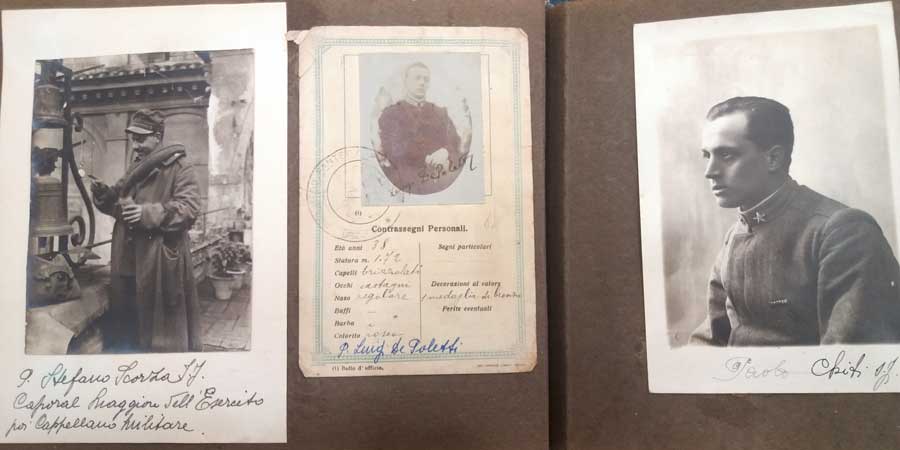
On the occasion of the 100th anniversary of the signing of the Versailles peace treaty, in this edition of the column we recall the First World War as recounted in the papers of our historical archive.
The variety of holdings in our archive offers researchers different types of sources on the First World War: photographs, printed bulletins, letters, memoirs.
In addition, the documentation offers different ‘points’ of observation of the war conflict: the documents from the houses in the provinces of Northern Italy, on the borders of the trenches are a direct source of the conflict; while the letters from the brethren inform the Superiors about the death of some of the brethren or the repercussions experienced by civilians,
The First World War was in fact fought mainly in the trenches, in a wearisome and slow conflict of position, so its echoes were much stronger in the residences and homes closer to the front than in those in central or insular Italy, where, however, much information nevertheless arrived thanks to frequent correspondence. This difference can be seen in the historiae domus, the annual reports that each community sends to the Province and the General Curia. This difference can be seen in the historiae domus, the annual reports that each community sends to the Province and the General Curia.
Much information about the Jesuits during the three years of war – for Italy, since for other nations the war began in 1914 – can be gleaned from the historical catalogues. The same catalogues are in turn a valuable source of the difficulties experienced in the provinces, for some provinces it was not possible to publish the annual catalogue or it had to be distributed in a more optimised form to cope with the shortage of funds and material.
There are also some diarists, such as Fr. Rocci and Fr. Massaruti, who, although distant from the conflict, report information on the fallen and bear witness to the correspondence with their former pupils.
There are many photos in the archive portraying young boys, still students in the Colleges of the Company or having just left Jesuit schools, sent to their professors, or attached by the family to the letter informing the school of the boy’s death.
From Lorenzo Rocci’s diary: ’15 September 1915 Today in Mondragone we received the sad news that Giovanni Galeotti Ottieri of the Ciaia di Chiusi had died in a battle on the Isonzo: such news has brought sorrow to all of us […] In the letters written to me from the front he reveals his deep religious feeling and at the same time enthusiasm for his duty’.
We know that during the war conflict, many civil buildings were converted into shelters or sanatoriums for wounded or convalescent soldiers who could not stay in the infirmaries at the front for first aid and the most serious cases.
In Rome, for example, the Maximilian Maximus Institute, at the time located near Termini Station, housed several convalescent soldiers, and photos are preserved of some of the larger boarding schools assisting the soldiers.
Fr Rocci also witnessed an event: “26 September 1915 I stopped at the Massimo Institute: there, shortly afterwards, the Queen Mother Margaret of Savoy suddenly arrived, visiting the sick soldiers in the house given as a hospital”.
within two months, Rocci noted other deaths on the front in his diary, all former pupils. In the nearby Villa Vecchia, in Frascati, another military hospital was established.
Several Jesuits were sent to the front as military chaplains, some of whom perished during the conflict: portrayed in many photos with their military uniform, rank and sometimes even in the camp, as in the case of Fr Strickland, a Navy chaplain.
Rocci’s diary also mentions the Spanish fever epidemic raging in Europe, not only at the front, but also among civilians. Fr. Rocci tells of the sick boys in the boarding school and the 200 deaths per day recorded in Rome.
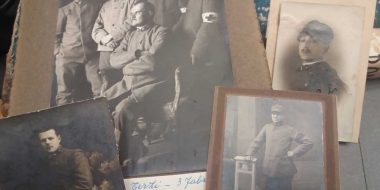
Maria Macchi

